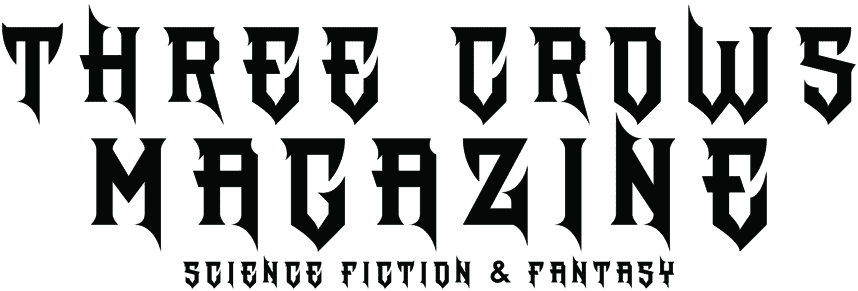Movie Review: Velvet Buzzsaw
by Alex Khlopenko
It feels strangely ironic to review a dumpster fire of a movie that made fun of critiquing anything by showing an art agent mistaking some trash bags for an art installation. Velvet Buzzsaw is as cheesy and on-the-nose as the above sentence sounds and there is no way around it. And it is actually a good idea for a horror movie to not take itself to serious – with the age of twenty thousand sequels to the gorefest of Saw movies and horrors/thrillers like Get Out and Hereditary still a rarity it was the right thing to do.
The story of centers around the elite circles of Los Angeles Contemporary art scene where a single critic can end an artist’s career with one scathing review, where power-gallerists fight with museum buyers for overvalued pieces of art in which someone could be interested only on the above folks’ advice.
Writer/Director Dan Gilroy present a cast of the outrageously ignorant characters with no less outrageously eyebrow-raising names – a sexually fluid and pompous-but-can’t be bought critic Morf Vandewalt (Gyllenhaal) punk rocker-turned-gallerist Rhodora Haze (Russo) and her ambitious protégé Josephina (Zewa Ashton), museum buyer Gretchen (Toni Collette, resembling the famous curator Helen Molesworth), and and power-hungry competitor to Rhodora – Ricky Blane (Peter Gadiot). All of them painted with the colors from the same palette – insufferable, pretentious, opportunists, who jump in at the first prospect of earning top dollar and never read the signs that something is wrong with what they do. Yet, it was a pleasure to see how the actors decide to go all Nicholas Cage on this movie, and especially – Jake Gyllenhaal, and how they utterly enjoyed playing their respective parts.
To illustrate the film’s distaste with the art-for-profit world it is depicting, Gilroy throws his characters a bone in the form of a lost Francis Bacon-wannabe Vetril Dease (*rolls eyes at another name*) – a tortured artist who painted with the blood of his victims and created disturbing and unnerving paintings that are really not that disturbing to be honest. And that is the issue with films about fictional artists – their art rarely lives up to the hype produced by the characters and the plot.
Despite the absurdity of execution, the mythology of Deases’ horror is done in good taste
The horror side of the film offers a more chaotic (with a pinch of moralization on the side) take on The Ring logic – after you see the tape you die. And everyone who profits from the suffering poured into Deases’ art dies in ultimate Final Destination style. While the premise sounds promising, the execution felt short – how could it not if a plot point for the first of the gruesome murders were directly taken from AirPods meme?
Despite the absurdity of execution, the mythology of Deases’ horror is done in good taste – it is never fully explained, the why’s and how’s are symbolic and open to the viewers’ interpretation. As much a David Lynch never wants to explain his films – they are an end in themselves, Velvet Buzzsaw requires no explanation (sorry to all the youtube “X’s Ending Explained” channels).
In its methodology, Velvet Buzzsaw offers a somewhat art-house take on the 70s British horror films – a fresh and welcome change to the Hollywood conveyor of formulaic filmmaking.
One might wonder what would inform such a negative view of the art world? Gilroy himself has admitted his inspiration for Velvet Buzzsaw came about when Warner Bros. canceled Tim Burton’s Superman Lives mere weeks before filming was to begin. The film was a reboot starring Nicolas Cage as Clark Kent, based on a screenplay that Gilroy wrote. The screenwriter was crushed that this script would never be seen, all because some studio executives cared only about how much money the film could make.
And it can be understood from the ending of the film when the credits roll over footage of one of the fictional artists, creating artwork on the sand on a beach that will just be erased by the waves. But he doesn’t care. He enjoys it. He’s creating art for the sake of creating, not for profit. His intentions are pure.
Much attention was drawn to the fact that it was made for Netflix, with the stress on the negative connotations of the idea that without Netflix such a film wouldn’t be made or at least wouldn’t be able to reach such a huge audience. And it is a good thing. The plurality of styles approaches, and executions – with all the weirdness and uncanniness that they entail, enhance the convoluted world of endless Marvel films, sequels, reboots, and adaptations.
Velvet Buzzsaw is a batshit crazy mess that knows it and doesn’t shy away from it or from the views that informed it. It is fresh, it is unusual, and it polarized the opinions of viewers and critics. It will be disliked for some time, only to be revered – just like Mullholand Drive or Fire Walk with Me. And it leaves me wondering whether I truly like the film or maybe I am just too afraid to write a negative review of the film that kills reviewers.
Alex Khlopenko is the editor of Three Crows Magazine.




